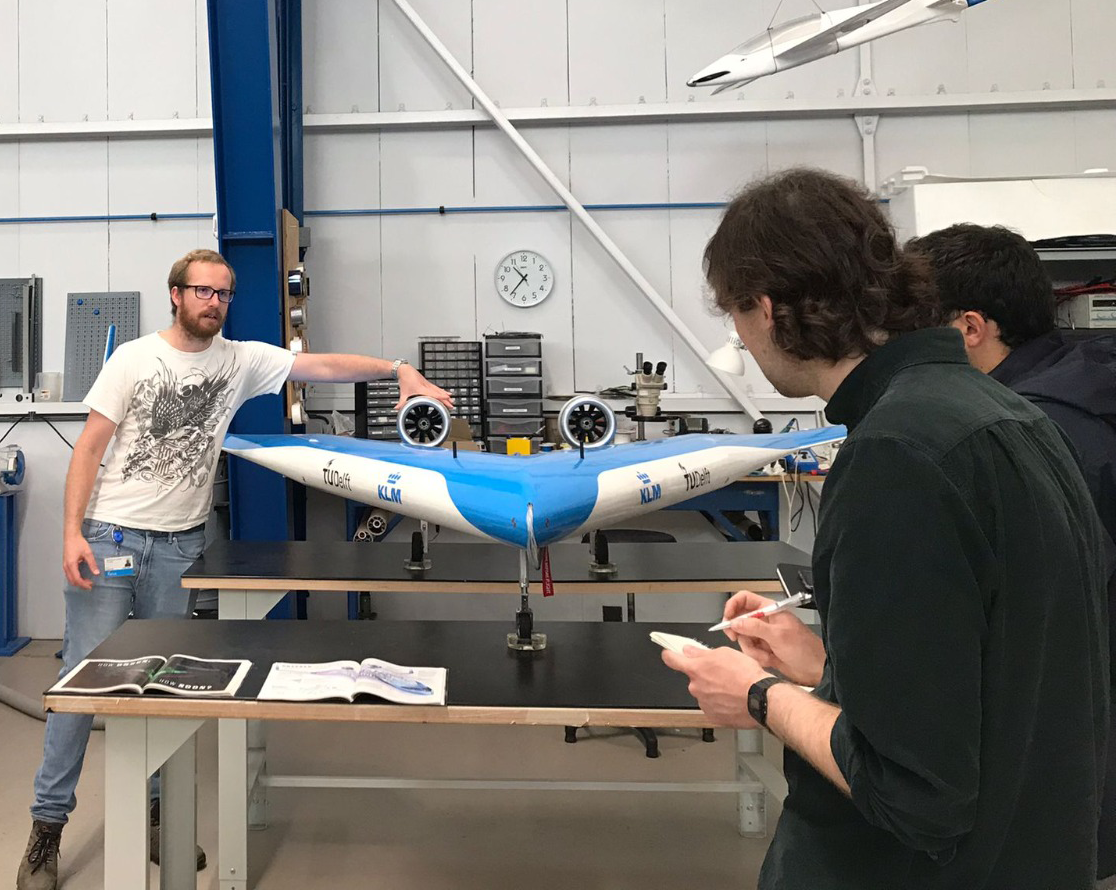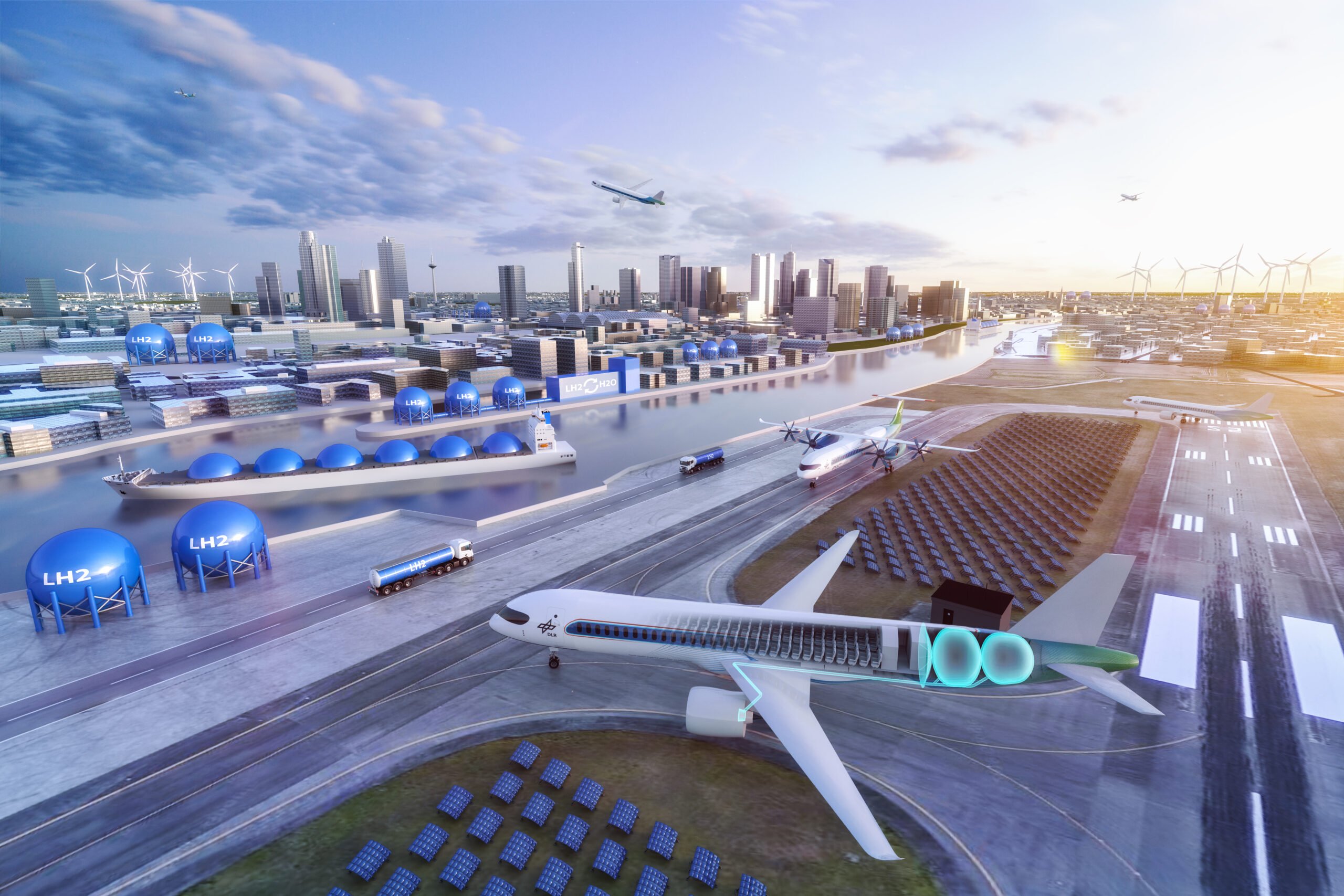
The mobility of tomorrow is green. There is no debate about that. What that green mobility will look like is another story. In the laboratories of Delft University of Technology, research is being conducted across a large number of areas. Innovation Origins editor Mauro Mereu had a look around the different research departments in Delft.
“Hydrogen will eventually take over; it’s just a matter of time,” states Arvind Gangoli Rao, professor at TU Delft. He states this while standing in front of a university wind tunnel, where he and his colleagues are researching more sustainable ways to travel – both by air and water.
This is where watercraft, aircraft, and innovative fuels come to life. H2 is the common thread running through countless studies being conducted in the TU Delft laboratories. From combustion engines to new aircraft designs, or powder used to store it, many endeavors undertaken by the Dutch university are aimed at facilitating the transition to hydrogen.
Mobility is one of the critical areas that must be addressed in order to drive the green transition. According to Eurostat, a quarter of the greenhouse gas emissions of 2019 came from transport. The European Environment Agency predicted that demand for both freight and passenger transport will steadily rise year on year by 1.5 percent.
The professor in no doubt that the solution is ready. “Hydrogen is easy to make, anywhere. In 10, 20 years’ time, I do see it as the replacement for fossil fuels. We’ll be able to produce it, but most of it will be imported from other parts of the world.” With this in mind, TU Delft is preparing for the transition without shying away from a single aspect.
Airplanes in the making
For anyone who is not in the know, the laboratory for aerospace structures and materials is not much different from a generic warehouse. Worktops, milling machines, and dust. A radio plays in the background. In addition to the hours spent working on calculations and developing algorithms, researchers and PhD students also need to show a great deal of skill to fine-tune their projects. Lots of plane wings are leaning next to different manufacturing machines – all with their own different features and shapes. The results of trial and error.

At one of the desks, two engineers are deep in a discussion. They are working on the Nederdrone project. It is a drone that has demonstrated its ability to fly for almost four hours on hydrogen. Moreover, it can land and take off vertically and also has batteries. The fuel cell generates electricity, which then powers the engine. Any surplus energy recharges the batteries. This is how the airplane manages to fly for a reasonable amount of time.
In the passageway in front of Nederdrone’s workstation, there is room for experiments carried out in the past. Hanging on a wall is an old prototype of a carbon fiber wing which has definitely seen better days. “It was tested by Airbus around 25 years ago. They somehow managed to destroy it, so they sent it back to the lab where it was originally made,” Gangoli Rao says.



There is also room for what Gangoli Rao calls a “cyber zoo,” a space where animal-inspired drones are being tested. “It’s like a playground, where a variety of devices perform different tasks,” he explains. Blue light sensors detect the drones’ movements across an artificial turf and send feedback to computers next to the test room.
A V-shaped aircraft is going to take to the skies
The lab comprises two levels, and a 1:20 scale model of the Flying-V aircraft concept stands out on the upper level. “With this aerodynamic concept, fuel consumption can already be reduced by 20 percent with existing engine technology,” explains Malcom Brown, chief engineer of the project. More research questions will be addressed over the coming years. Most notably, the adaptation of the platform to new fuels (such as hydrogen), maintenance and design issues, as well as airport integration.

This Flying-V initiative is being carried out in a partnership with KLM and Airbus. Apart from improved efficiency, the v-shape also guarantees greater stability to the more than 300 passengers on board.
Flame management
Another method to lower aviation emissions is flameless combustion, which has low levels of nitrogen oxide (NOx)- emissions. In a separate TU Delft facility, there’s a noisy combustion engine that burns fuel made up of hydrogen for 25 percent. Another project aims to make H2 combustion more stable by stabilizing their vortexes. This can also help reduce NOx emissions from aircraft turbines.

The craft of tomorrow
From air now to water, the Faculty of Mechanical, Maritime, and Materials Engineering – 3mE – is focusing on more sustainable shipping. Researchers test maritime innovations on what might seem like an Olympic pool with train tracks on the sides. The basin is a towing tank, where a mobile platform with a manned driven motor system goes from one end to the other to make trial runs with new propellers, hydrofoils, or hulls.
“All research here focuses on predicting and dealing with waves, so in other words, to try out ways to adjust how you propel your ship,” explains Lindert van Biert, assistant professor of Ship Design, Production & Operations.
In his earlier research, he studied fuel cell-based hybrid systems. Specifically, this involved experimenting with replacing 20 percent natural gas with hydrogen from anode-off gas – an exhaust gas that is high in H2. “In fact, the combination of fuel cells with an engine resulted in an increase in efficiency up to 55 percent,” he adds.

More efficient cruise ships
Berend van Veldhuizen is also studying fuel cells. Understanding their behavior in ships in motion is key to their use. “We are mapping out what kinds of circumstances cruise ships can experience, what motion they have to withstand, and what parts can be affected.” As part of the EU-funded Nautilus project, van Veldhuizen and other researchers have designed a moving test rig to simulate how a fuel cell stack responds to motion.
Given the existing infrastructure, this is aimed at Liquified Natural Gas – LNG. “The starting point is LNG, which in combination with fuel cells will reduce methane emissions since it is more efficient. Further research will make it possible to adapt this concept to hydrogen,” van Biert clarifies.

Test tunnel
It works with seawater, which ensures that the tests are as reliable as possible. The tunnel mimics what happens in the sea when water is pumped around a loop, whereby water flow and pressure conditions that hydrofoils and propellers must endure can be adjusted.
One of the research areas the scientists want to explore is air lubrication in craft. The technique involves applying a layer of air bubbles under a ship. This layer can help reduce water resistance – and consequently fuel consumption.

A powder as powerful as diesel
Fuels themselves are part of the research being carried out at 3mE. Santiago Garrido is part of a group studying sodium borohydride – NaBH4. Previous research at TU Delft has shown how this powder could work as an effective hydrogen carrier that releases H2 when mixed with water. “We are trying to engineer the regeneration of the used fuel by means of a mechanochemical reaction – which is induced by mechanical action,” the researcher goes on to explain.
In order to make the fuel circular, the researchers feed the used fuel into a ball mill – a machine with rotating iron balls – which causes a rotational motion. This kind of motion produces high-frequency shocks that could turn sodium borohydride into a circular fuel. The white powder offers promising potential for use in shipping. Especially since NaBH4 can store almost as much energy as diesel.

Green refinery
A Daedalean labyrinth of pipes and equipment is what the e-Refinery institute looks like. But there is also room for smaller labs. In one of them, Ruud Kortlever – together with his colleagues – is working on accelerating the production of sustainable fuels that are generated using water or electricity.
“The main challenge is how to make green hydrogen in a cost-effective way. Another question we are trying to solve is how to harness it in a chemical process, but also how it can be reused,” Kortlever says.
In one of the experiments, TU Delft researchers at the e-Refinery tried to convert green hydrogen into methane through a two-step process. First H2 production, followed by a thermal chemical reaction. In addition to that, the lab is trying to make use of CO2 for chemicals and fuels.

Challenging bubbles
A battery, two screws, a glass of water, and baking soda. That’s all it takes to produce hydrogen. Jorrit Bleeker puts together this fast electrolyzer and shows how H2 and oxygen bubbles form when electricity is applied to the solution. “The main problem is that a large part of the energy used to produce hydrogen is wasted, and those gas bubbles make it difficult for the reaction to happen. In my PhD project, I’m looking at ways to burst these bubbles.”

